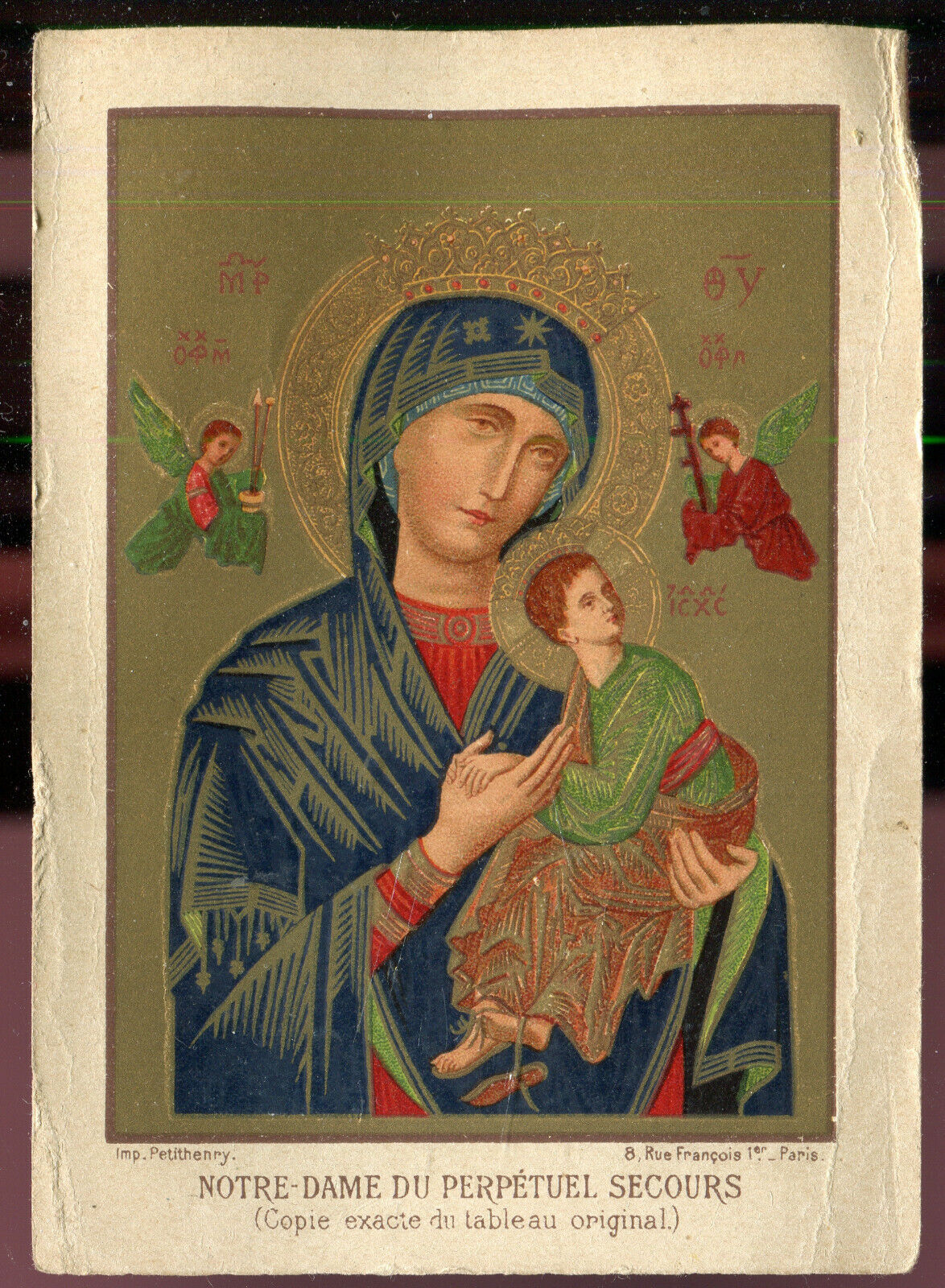-40%
Holy Card of Saint Mary Magdalene Plus a 1" Silver Oxidized Medal of The Saint
$ 2.5
- Description
- Size Guide
Description
Laminated Holy Card (4.75" X 3.50") of Saint Mary Magdalene Plus a Silver Oxidized Medal of The Saint 1". Condition is New. Shipped with USPS First Class Package.This exceptionally detailed die-cast medal, with St Mary Magdalen on the front and PRAY FOR US on the back, is made in the region of Italy that produces the finest quality medals in the world. The silver oxidized finish is has been perfected for hundreds of years by the local Italian craftsmen, and remains unmatched in quality, beauty, and longevity throughout the world -a genuine silver plating with a 3-dimensional depth, and long-lasting brilliance. Measures approximately 1 inch in height - attached jump ring is included.
Saint
Mary Magdalene
, sometimes called simply the Magdalene or the Madeleine, was a
Jewish Woman
who, according to the four canonical gospels, traveled with Jesus as
one of
his followers and was a witness to his crucifixion, burial, and resurrection. She is mentioned by name twelve times in the canonical gospels,more than most of the apostles and more than any other non-family woman in
the Gospels
. Mary's epithet Magdalene may mean that she came from the town
of Magdala
, a fishing town on the western shore of the Sea of Galilee.
The Gospel of Luke 8:2–3 lists Mary Magdalene as one of the women who traveled with Jesus and helped support his ministry "out of their resources", indicating that she was probably relatively wealthy. The same passage also states that seven demons had been driven out of her, a statement which is repeated in the longer ending of Mark. In all four canonical gospels, Mary Magdalene is a witness to the crucifixion of Jesus and, in the Synoptic Gospels, she is also present at his burial. All four gospels identify her, either alone or as amember of a larger group of women which includes Jesus's mother, as the first to witness the empty tomb, and the first to witness Jesus's resurrection.
For these reasons, Mary Magdalene is known in some Christian traditions as the apostle to the apostles. Mary Magdalene is a central figure in later Gnostic Christian writings, including the Dialogue of the Savior, the Pistis Sophia, the Gospel of Thomas, the Gospel of Philip, and the Gospel of Mary which many scholars attribute to Mary Magdalene. These texts portray Mary Magdalene as an apostle, as Jesus's closest and most beloved disciple and the only one who truly understood his teachings. In the Gnostic texts, or Gnostic gospels, Mary Magdalene's closeness to Jesus results in tension with another disciple, particularly Peter due toher gender and Peter's jealousy of special teachings given to her. Scholars find claims Mary Magdalene was romantically involved with Jesus to be unsupported by evidence.
The inaccurate portrayal of Mary Magdalene as a prostitute began after a series of Easter sermons delivered in 591, when Pope Gregory I conflated Mary Magdalene,who is introduced in Luke 8:2, with Mary of Bethany (Luke 10:39) and the unnamed "sinful woman" who anoints Jesus's feet in Luke 7:36–50. This resulted in a widespread but inaccurate belief that she was a repentant prostitute or promiscuous woman. Elaborate medieval legends from western Europe tell exaggerated tales of Mary Magdalene's wealth and beauty, as well as her alleged journey to southern France. The identification of Mary Magdalene with Mary of Bethany and the unnamed "sinful woman" was a major controversy in the years leading up to the Reformation and some Protestant leaders rejected it.During the Counter-Reformation, the Catholic Church emphasized Mary Magdalene as a symbol of penance.
In 1969, the identification of Mary Magdalene with Mary of Bethany and the "sinful woman" was removed from the General Roman Calendar by Pope Paul VI, but the view of her as a former prostitute has persisted in popular culture. Mary Magdalene is considered to be a saint by the Catholic, and by the Eastern Orthodox, Anglican, and Lutheran churches. In 2016 Pope Francis raised the level of liturgical memory on July 22 from memorial to feast. Other Protestant churches honor her as a heroine of the faith. The Eastern Orthodox churches also commemorate her on the Sunday of the Myrrhbearers, the Orthodox equivalent of one of the Western Three Marys traditions.











